All 7 entries tagged Ideation
Well ordered conceptualisations forming prototype arguments and solutions to be tested against real world situations.
View all 55 entries tagged Ideation on Warwick Blogs | View entries tagged Ideation at Technorati | There are no images tagged Ideation on this blog
July 13, 2009
Personal state descriptors for case studies
I am looking for a simple, unobtrusive method for surveying the physical, intellectual, social and emotional states of students participating in experimental teaching sessions. I have in the past done similar exercises in focus groups, however in teaching the survey methods must not get in the way of the learning process.
The simplest approach would be to present each student with a list of personal state descriptors, and get them to tick the words that represent their current state. This could be repeated at key points during the lesson. For example, when bringing the students into an unfamiliar spatial organisation. But how to choose the words? There can't be many of them in the list. I can give the student a space to add their own words. But if I get the right set of words, it just might work. Here's some ideas:
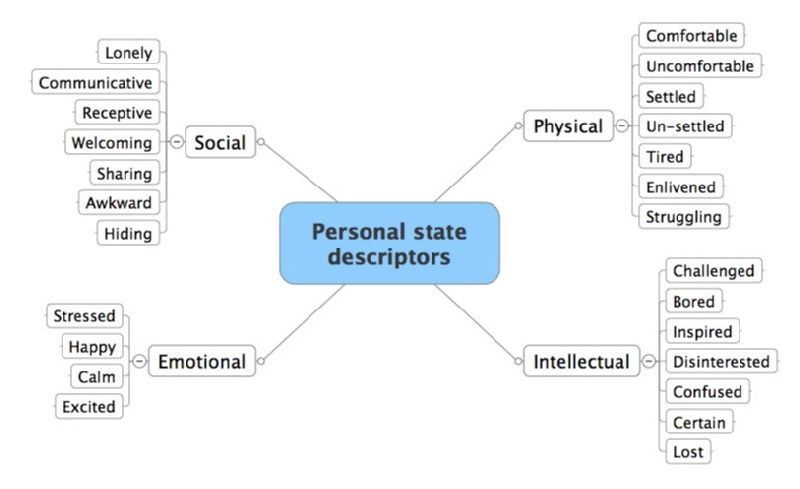
Any suggestions are most welcome.
July 10, 2009
Designing spaces for successful researchers, writers, artists, learners
Is success as a researcher made more likely by adopting certain arrangements of working space and technology? If so, are there generic patterns? How are these spatial design patterns related to those used by other successful creatives? Are they the same patterns that can help a learner to be successful?
Are there generic patterns for creative spaces that apply to researchers and learners?
July 01, 2009
Slides from a presentation on the 3 types of learning/design space
Follow-up to Design Thinking – Tim Brown from Inspires Learning - Robert O'Toole
Here are some slides from a presentation that I gave today on learning space design, using Tim Brown's model of design spaces. I've taken out the copyrighted material from Brown's HBR article, as well as slides that apply this approach to an analysis of Warwick blogs. My core message was: design and use different learning spaces for different purposes - be clear, is a space inspirational, ideational, implementational? In which if these ways should students behave at a specific time?


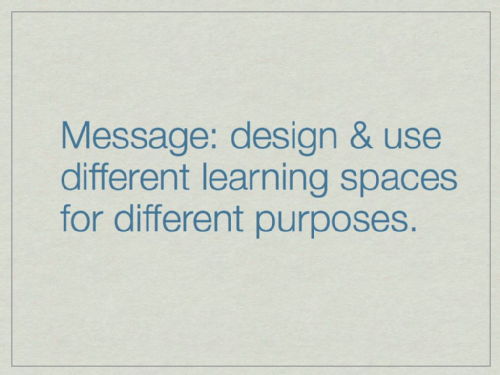
I then presented the design spaces diagram and some quotes from Brown's article (not shown here for copyright reasons).
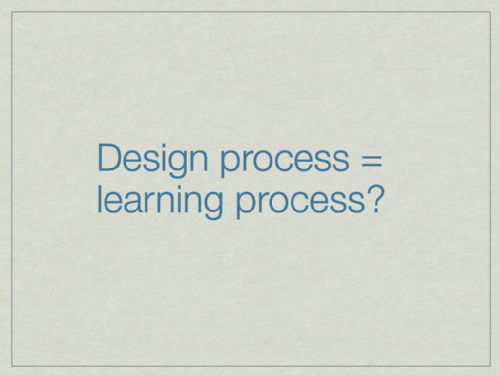

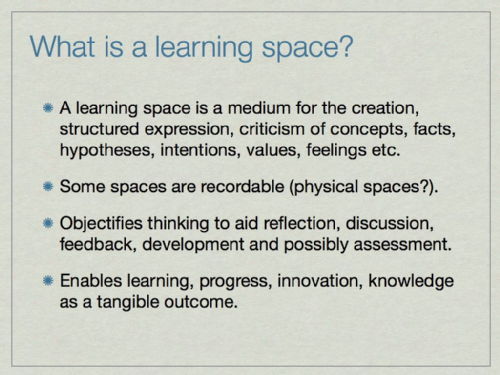
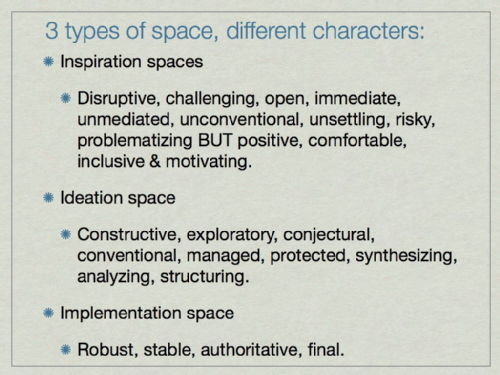
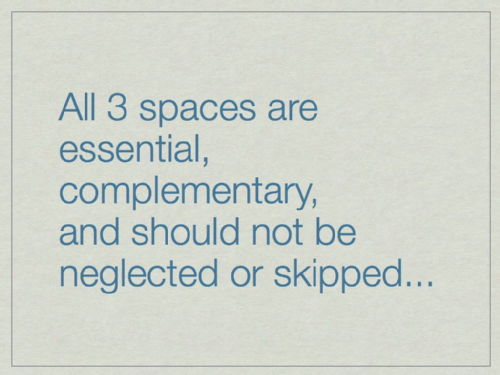

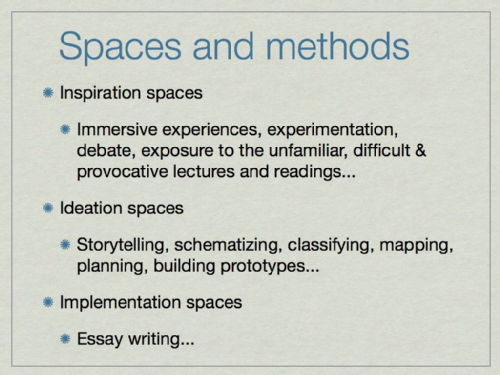
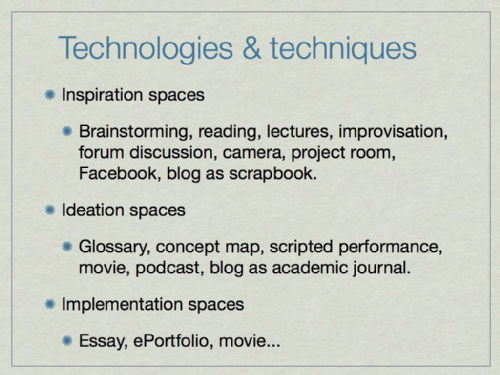
I then went on to consider how Warwick Blogs can used as an inspirational space and as an ideational space. This dual-purpose can be confusing, and a barrier to the use of blogs for teaching and learning.
 Robert O'Toole
Robert O'Toole

 Please wait - comments are loading
Please wait - comments are loading





